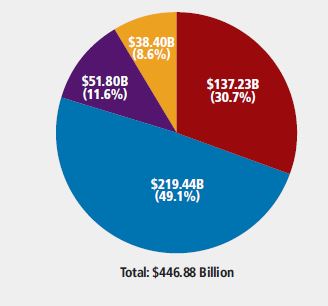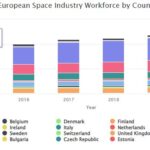Austria
2021 TSR – Space Symposium Special Edition: Global Space Economy Climbs Despite Pandemic, Disrupted Government Spending


The global space economy reached a new high of nearly $447 billion in 2020, an increase of 4.4% from a revised 2019 figure of $428 billion. The 2020 figure is 50% greater than a decade ago, and 176% greater than . . .
2019 TSRQ3 – Education STEM Proficiency


The science, technology, engineering, and mathematics (STEM) workforce is at the core of the space industry—from the mathematicians and astronomers who analyze space to the engineers who design and build the launch vehicles that get us there. This workforce is enabled . . .
2019 TSRQ2 – Economy: Non-U.S. Government Space Investment


Growth in the government investment sector of the space economy outpaced commercial sectors as the U.S. and non-U.S. government shares of the global space economy between 2017 and 2018. . .
2017 – Government Space Budgets
Global government spending increased in 2017, totaling $76.2 billion, up from $72.7 billion in 2016. Government spending accounted for 19.9% of the global space economy . . .
European Space Industry Workforce by Country 2000 – 2020


Stacked bar chart showing a twenty-year look at the European space industry workforce by country 2000 – 2020
2009 – European Space Industry Employment – Snapshot
By 2008, European space employment reached ## full-time equivalent (FTE) employees, which remains ##% lower than the near-historic high in 2001, when employment totaled approximately ## jobs with ##% annual growth. Space employment fell each year from 2002 to 2005, including a ##% decrease in 2005 when space employment fell to ## FTE employees. Beginning in 2006, growth resumed, with ##% employment growth in 2008.
Tagging Disaster Areas in Satellite Imagery
Scandicraft, a Norwegian unmanned aerial vehicle (UAV) service provider, has developed a system that “geotags,” or marks the physical location of, aerial images from a disaster area and uploads the images via satellite link within minutes.